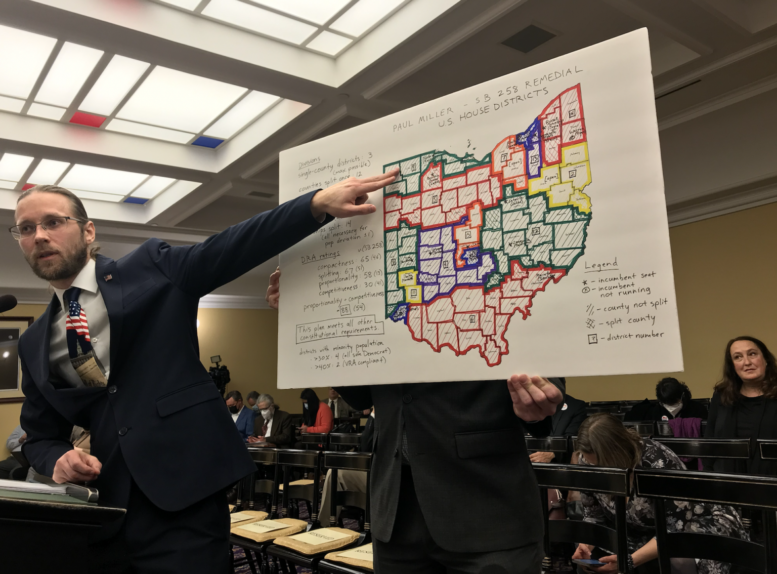BY SUSAN TEBBEN
The latest legislative map tunnel may finally have an end if redistricting leaders are to be believed. Congressional redistricting still has a way to go.
On the same day that members of the Ohio Redistricting Commission submitted their arguments as to why the Ohio Supreme Court shouldn’t hold them in contempt for missing the legislative redistricting deadline, they met for the second time this week to talk maps.
The congressional redistricting deadline set by the state’s high court isn’t up until mid-March, but election deadlines are quickly expiring, as Secretary of State Frank LaRose keeps reminding his fellow commission members.
“As we speak, the boards of election are starting to program voting machines, starting to set up their systems to run that election based on that ballot,” LaRose said of the May primary.
[Commentary: Ohio GOP gerrymanderers living in opposite world where fair maps are ‘the real gerrymandering’]
Most of Wednesday’s meeting was filled with three map proposals for completed congressional districts. The first came from Paul Miller, who said his map was non-partisan, but went after Democrats and “liberal activists” for allegedly fouling up the redistricting process. He also repeated false statements about the 2020 election results being in question.
“If you decide there’s a better map for your consideration than the one I’ve given you or that you can do better yourselves, that’s fine, but it’s time for you to choose so we can all move on with our lives,” Miller told the commission.
Miller’s map has an 8-4 partisan breakdown, with three districts considered tossups, according to data Miller provided from Dave’s Redistricting App.
House Speaker Bob Cupp, co-chair of the commission, asked methodical questions about whether the maps presented followed the constitutional regulations for redistricting, including equal population rates and county/municipality splits. Those presenting maps said all three of the maps met the constitutional rules.
Common Cause Ohio executive director Catherine Turcer took the lead on the Fair Districts Coalition proposal, which was inspired by a map-drawing contest they held earlier in the process.
The partisan breakdown on the Fair Districts map was 9-6, according to Turcer, but in a “banner year” could slim down to 8-7.
No decisions were made on the congressional maps, and the cloud of legislative redistricting seemed to overtake the mission established for Wednesday’s meeting.
As soon as the presentations ended, questions came up again about the progress of legislative redistricting. House Speaker Cupp remained vague, saying work is continuing and progress is being made. A map, he said, will be made available “as soon as possible.”
In documents to the Ohio Supreme Court, Cupp and Senate President Matt Huffman used progress on legislative maps as one reason they shouldn’t be held in contempt. They stated a map could be voted on this week.
Huffman told reporters after the meeting recessed that mapmakers are “very close” and he thought a product would be ready on Thursday.
“I don’t know if it will have bipartisan agreement or not, what we’re focused on is complying with the constitution as written and as directed to us by the supreme court,” Huffman said.
Democrats on the commission continued to claim the GOP has kept them out of map discussions, and co-chair state Sen. Vernon Sykes and House Minority Leader Allison Russo haven’t been privy to any progress that’s been made.
“We’re part of the commission and so far we haven’t seen it and haven’t participated in it, and can’t verify that the work is even being done,” Sykes said.
The Democratic co-chair said staff working on redistricting met Wednesday afternoon. All staff were invited, but he said staff from Cupp and Huffman’s offices did not participate.
“Maybe they were busy working to try to come up with a construct, so it would make meeting productive,” Cupp said in response to Sykes’ comments.
The commission did not adjourn, instead choosing to “recess” until 11:30 or at the call of the chair on Thursday.





